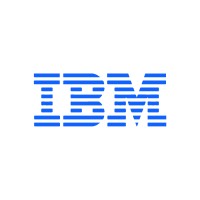
Amazon Web Services (AWS) Company Cyber Security Posture
amazon.comLaunched in 2006, Amazon Web Services (AWS) began exposing key infrastructure services to businesses in the form of web services -- now widely known as cloud computing. The ultimate benefit of cloud computing, and AWS, is the ability to leverage a new business model and turn capital infrastructure expenses into variable costs. Businesses no longer need to plan and procure servers and other IT resources weeks or months in advance. Using AWS, businesses can take advantage of Amazon's expertise and economies of scale to access resources when their business needs them, delivering results faster and at a lower cost. Today, Amazon Web Services provides a highly reliable, scalable, low-cost infrastructure platform in the cloud that powers hundreds of thousands of businesses in 190 countries around the world. With data center locations in the U.S., Europe, Singapore, and Japan, customers across all industries are taking advantage of our low cost, elastic, open and flexible, secure platform.
AWS( Company Details
amazon-web-services
139764 employees
10181203.0
541
IT Services and IT Consulting
amazon.com
2908
AMA_2359329
In-progress
Between 900 and 1000
This score is AI-generated and less favored by cyber insurers, who prefer the TPRM score.
 AWS( Global Score
AWS( Global Score.png)

Amazon Web Services (AWS) Company Scoring based on AI Models
| Model Name | Date | Description | Current Score Difference | Score |
|---|---|---|---|---|
| AVERAGE-Industry | 03-12-2025 | This score represents the average cybersecurity rating of companies already scanned within the same industry. It provides a benchmark to compare an individual company's security posture against its industry peers. | N/A | Between 900 and 1000 |
Amazon Web Services (AWS) Company Cyber Security News & History
| Entity | Type | Severity | Impact | Seen | Url ID | Details | View |
|---|---|---|---|---|---|---|---|
| Amazon | Cyber Attack | 80 | 2 | 01/2016 | AMA0417522 | Link | |
Rankiteo Explanation : Attack limited on finance or reputationDescription: Amazon’s customer service representative was tricked into disclosing Eric Springer, a user’s personal information by an attacker who used social engineering techniques. The attack initiated through the mail ended up in the attacker getting the credit card details along with the address and other details. The incident got all highlighted on the internet and people on the web demanded social engineering training to be given to employees to prevent any such incidents in the future. | |||||||
| Ring | Breach | 100 | 5 | 01/2021 | RIN01518622 | Link | |
Rankiteo Explanation : Attack threatening the organization's existenceDescription: A security flaw in Ring’s Neighbors app exposed the precise locations and home addresses of users who had posted to the app. It included the videos taken by Ring doorbells and security cameras and the bug made it possible to retrieve the location data of users who posted to the app. The bug retrieved the hidden data, including the user’s latitude and longitude and their home address, from Ring’s servers. The hackers also created tools to break into Ring accounts and over 1,500 user account passwords were found on the dark web. | |||||||
| Ring | Data Leak | 85 | 3 | 01/2020 | RIN211261222 | Link | |
Rankiteo Explanation : Attack with significant impact with internal employee data leaksDescription: Amazon-owned home security camera company Ring fired employees for improperly accessing Ring users' video data. This data can be particularly sensitive though, as customers often put the cameras inside their home. Ring employees in Ukraine were given unrestricted access to videos from Ring cameras around the world. | |||||||
| Amazon | Data Leak | 50 | 2 | 01/2020 | AMA21461222 | Link | |
Rankiteo Explanation : Attack limited on finance or reputationDescription: Amazon had fired a number of employees after they shared customer email address and phone numbers with a third-party violating of their policies. No other information related to account was shared. | |||||||
| Twitch | Data Leak | 85 | 10/2021 | TWI19174123 | Link | ||
Rankiteo Explanation : Attack with significant impact with internal employee data leaks.Description: Amazon.com Inc’s live streaming e-sports platform Twitch was hit by a data breach. An anonymous hacker leaked Twitch data, including information related to the company’s source code, clients and unreleased games, according to Video Games Chronicle. The data was exposed due to an error in a Twitch server configuration change and was subsequently accessed by a malicious third party. | |||||||
| Ring | Data Leak | 60 | 4 | 12/2019 | RIN2178523 | Link | |
Rankiteo Explanation : Attack with significant impact with customers data leaksDescription: 3,672 Ring camera owners' login information, including login emails, passwords, time zones, and the names people give to certain Ring cameras, was stolen. This enables a potential assailant to observe cameras in someone's home, which is a grave potential breach of privacy. A hacker might access a Ring customer's home address, phone number, and payment information, including the type of card they have, its last four numbers, and security code, using the login email and password. The nature of the leaked data, which contains a username, password, camera name, and time zone in a standardized format, shows that it was acquired from a company database. | |||||||
| Whole Foods Market | Breach | 50 | 2 | 09/2023 | WHO04111223 | Link | |
Rankiteo Explanation : Attack limited on finance or reputationDescription: Whole Foods Market chain Whole Foods Market Suffered Payment Card Breach. The security breach report states that thieves were able to obtain credit card details of patrons who made transactions at specific locations, such as full-service restaurants and taprooms inside some stores, without authorization. Whole Foods Market was notified of an incident in which payment card information used at select establishments like full-service restaurants and taprooms located within some locations was improperly accessed. The locations and total number of consumers affected by the attack remain unknown, as the company has not released any information about it. | |||||||
| Amazon Web Services (AWS) | Data Leak | 85 | 4 | 02/2018 | AMA350181223 | Link | |
Rankiteo Explanation : Attack with significant impact with customers data leaksDescription: An Amazon S3 bucket containing scans of about 119,000 US and foreign citizens' IDs and personal information was found by researchers. The firm that owns the data, Bongo International, is owned by FedEx and supports North American retailers' and brands' online sales to customers abroad. In the AWS bucket were over 112,000 files, unencrypted data, and customer ID scans from a wide range of nations, including the US, Mexico, Canada, many EU nations, Saudi Arabia, Kuwait, Japan, Malaysia, China, and Australia. FedEx did not remove the S3 bucket until its presence was made public, despite Kromtech's best efforts to get in touch with them. | |||||||
| webXray | Breach | 85 | 4 | 7/2024 | AMA000072524 | Link | |
Rankiteo Explanation : Attack with significant impact with customers data leaksDescription: webXray, a tool designed to expose privacy violations on the internet, reveals how tech giants like Google and various websites track user data and browsing habits. Developed by former Google engineer Tim Libert, webXray analyzes web activity to identify which sites collect data, including sensitive information. Such tracking, often without clear user consent, can breach laws like HIPAA and GDPR, posing serious threats to individuals' privacy. The tool aims to empower regulators and attorneys to assess and rectify these violations, promoting a balanced digital ecosystem. | |||||||
| Amazon Web Services | Vulnerability | 60 | 3 | 8/2024 | AMA000082124 | Link | |
Rankiteo Explanation : Attack with significant impact with internal employee data leaksDescription: A vulnerability in Amazon Web Services' Application Load Balancer was discovered by security firm Miggo, which could potentially allow an attacker to bypass access controls and compromise web applications. This vulnerability was not due to a software flaw but stemmed from customers' configuration of the service, particularly the setup of authentication. Researchers identified over 15,000 web applications with potentially vulnerable configurations, though AWS disputes the figure and has contacted customers to recommend more secure setups. Exploiting this vulnerability would involve token forgery by the attacker to obtain unauthorized access to applications, escalating privileges within the system. | |||||||
| Ring | Cyber Attack | 60 | 2 | 7/2025 | RIN709072225 | Link | |
Rankiteo Explanation : Attack limited on finance or reputationDescription: Ring, a subsidiary of Amazon, faced a significant issue on May 28th when customers reported unauthorized devices logged into their accounts from various locations worldwide. While Ring attributed this to a backend update bug, customers remained skeptical, citing unknown devices and strange IP addresses. The company's explanation was met with disbelief, as users saw logins from countries they had never visited and devices they did not recognize. Additionally, some users reported live view activity during times when no one accessed the app and missed security alerts or multi-factor authentication prompts. Ring's lack of clarity and the persistence of the issue have raised concerns among customers about potential security breaches. | |||||||
Amazon Web Services (AWS) Company Subsidiaries

Launched in 2006, Amazon Web Services (AWS) began exposing key infrastructure services to businesses in the form of web services -- now widely known as cloud computing. The ultimate benefit of cloud computing, and AWS, is the ability to leverage a new business model and turn capital infrastructure expenses into variable costs. Businesses no longer need to plan and procure servers and other IT resources weeks or months in advance. Using AWS, businesses can take advantage of Amazon's expertise and economies of scale to access resources when their business needs them, delivering results faster and at a lower cost. Today, Amazon Web Services provides a highly reliable, scalable, low-cost infrastructure platform in the cloud that powers hundreds of thousands of businesses in 190 countries around the world. With data center locations in the U.S., Europe, Singapore, and Japan, customers across all industries are taking advantage of our low cost, elastic, open and flexible, secure platform.
Access Data Using Our API

Get company history
.png)
AWS( Cyber Security News
Top 10 AWS Security Issues You Need to Know
Learn about AWS security, the top 10 issues to be aware of, best practices for safeguarding your cloud environment, and how SentinelOne can ...
Culminate combines human and artificial intelligence for real cybersecurity value
Culminate is a rapidly growing startup helping customers navigate this complex environment through its partnership with AWS. Founded in 2023, in the space of a ...
How cyber security professionals are leveraging AWS tools
It's now essential for IT security teams to have oversight of cloud computing, and AWS offers a plethora of tools to make managing it easier ...
AWS and BSI sign cooperation agreement to advance cybersecurity and digital sovereignty in Germany and the EU
Amazon Web Services (AWS) and the German Federal Office for Information Security (BSI) have signed a cooperation agreement, to develop and ...
AWS Default IAM Roles Found to Enable Lateral Movement and Cross-Service Exploitation
Cybersecurity researchers have discovered risky default identity and access management (IAM) roles impacting Amazon Web Services that could ...
Amazon helps the US Department of Justice thwart international cybercriminal group Anonymous Sudan
The US Department of Justice (DOJ) unsealed criminal charges against two leaders of a highly disruptive cybercriminal operation.
Generative AI tops cybersecurity in 2025 tech budget priorities, new AWS study finds
An AWS-commissioned global survey of IT leaders finds that generative AI has overtaken security as the top tech budget priority for 2025. ( ...
Introducing the AWS Zero Trust Accelerator for Government | Amazon Web Services
by Derek Doerr on 06 MAY 2025 in Announcements, Compliance, Foundational (100), Government, Public Sector, Security, Identity, & Compliance Permalink ...
9 Critical AWS Security Risks: A Comprehensive List
Elevate your defenses against sophisticated malware, protect hybrid clouds, and mitigate AWS security risks. Be vigilant and implement the ...

AWS( Similar Companies

Nityo Infotech
Nityo Infotech (Nityo) is a Global Technology Solutions and Services organisation. Headquartered in US with deep imprints in LATAM, APAC, EUROPE/CIS & MIDDLE EAST & AFRICA. Nityo is powered by 31,000+ employees across 41 countries serving enterprises across industries like Banking, Insurance,

IBM
At IBM, we do more than work. We create. We create as technologists, developers, and engineers. We create with our partners. We create with our competitors. If you're searching for ways to make the world work better through technology and infrastructure, software and consulting, then we want to work

Globant
At Globant, we create the digitally-native products that people love. We bridge the gap between businesses and consumers through technology and creativity, leveraging our experience as an AI powerhouse. We dare to digitally transform organizations and strive to delight their customers. - We have mo

NTT DATA, Inc.
NTT DATA, Inc. is a trusted global innovator of business and technology services. We're committed to helping clients innovate, optimize and transform for long-term success. Our R&D investments help organizations and society move confidently and sustainably into the digital future. As a Global Top Em

ITC Infotech
ITC Infotech is a global technology solution and services leader providing business-friendly solutions, that enable future-readiness for clients. We seamlessly bring together digital expertise, strong industry-specific alliances, and deep domain expertise from ITC Group businesses. Our solutions and

Lenovo
Lenovo is a US$57 billion revenue global technology powerhouse, ranked #248 in the Fortune Global 500, and serving millions of customers every day in 180 markets. Focused on a bold vision to deliver Smarter Technology for All, Lenovo has built on its success as the world’s largest PC company with a

Frequently Asked Questions
Explore insights on cybersecurity incidents, risk posture, and Rankiteo's assessments.
AWS( CyberSecurity History Information
How many cyber incidents has AWS( faced?
Total Incidents: According to Rankiteo, AWS( has faced 11 incidents in the past.
What types of cybersecurity incidents have occurred at AWS(?
Incident Types: The types of cybersecurity incidents that have occurred incidents Breach, Data Leak, Cyber Attack and Vulnerability.
How does AWS( detect and respond to cybersecurity incidents?
Detection and Response: The company detects and responds to cybersecurity incidents through remediation measures with Ring is deploying a fix and communication strategy with Ring posted on Facebook and updated its status page and containment measures with Removed the S3 bucket and remediation measures with Fired Employees and communication strategy with Public demand for social engineering training.
Incident Details
Can you provide details on each incident?

Incident : Bug/Exploit
Title: Ring Backend Update Bug Causes Unauthorized Device Logins
Description: Ring customers reported seeing unusual devices logged into their accounts from various locations worldwide, leading them to believe their accounts had been hacked. Ring attributed this to a backend update bug.
Date Detected: 2023-05-28
Type: Bug/Exploit
Attack Vector: Backend Update Bug
Vulnerability Exploited: Backend Update Bug

Incident : Misconfiguration
Title: AWS Application Load Balancer Vulnerability
Description: A vulnerability in Amazon Web Services' Application Load Balancer was discovered by security firm Miggo, which could potentially allow an attacker to bypass access controls and compromise web applications. This vulnerability was not due to a software flaw but stemmed from customers' configuration of the service, particularly the setup of authentication. Researchers identified over 15,000 web applications with potentially vulnerable configurations, though AWS disputes the figure and has contacted customers to recommend more secure setups. Exploiting this vulnerability would involve token forgery by the attacker to obtain unauthorized access to applications, escalating privileges within the system.
Type: Misconfiguration
Attack Vector: Token Forgery
Vulnerability Exploited: Misconfiguration of AWS Application Load Balancer Authentication
Motivation: Unauthorized Access, Privilege Escalation

Incident : Privacy Violation
Title: Privacy Violations Exposed by webXray
Description: webXray, a tool designed to expose privacy violations on the internet, reveals how tech giants like Google and various websites track user data and browsing habits. Developed by former Google engineer Tim Libert, webXray analyzes web activity to identify which sites collect data, including sensitive information. Such tracking, often without clear user consent, can breach laws like HIPAA and GDPR, posing serious threats to individuals' privacy. The tool aims to empower regulators and attorneys to assess and rectify these violations, promoting a balanced digital ecosystem.
Type: Privacy Violation
Attack Vector: Data Tracking
Vulnerability Exploited: Lack of clear user consent
Motivation: Data Collection

Incident : Data Exposure
Title: Data Exposure of Bongo International's S3 Bucket
Description: An Amazon S3 bucket containing scans of about 119,000 US and foreign citizens' IDs and personal information was found by researchers. The firm that owns the data, Bongo International, is owned by FedEx and supports North American retailers' and brands' online sales to customers abroad. In the AWS bucket were over 112,000 files, unencrypted data, and customer ID scans from a wide range of nations, including the US, Mexico, Canada, many EU nations, Saudi Arabia, Kuwait, Japan, Malaysia, China, and Australia. FedEx did not remove the S3 bucket until its presence was made public, despite Kromtech's best efforts to get in touch with them.
Type: Data Exposure
Attack Vector: Misconfigured S3 Bucket
Vulnerability Exploited: Misconfiguration

Incident : Data Breach
Title: Whole Foods Market Payment Card Breach
Description: Whole Foods Market chain suffered a payment card breach where thieves obtained credit card details of patrons who made transactions at specific locations, such as full-service restaurants and taprooms inside some stores, without authorization.
Type: Data Breach
Attack Vector: Payment Card Systems
Threat Actor: Thieves
Motivation: Financial Gain

Incident : Data Breach
Title: Ring Camera Data Breach
Description: 3,672 Ring camera owners' login information, including login emails, passwords, time zones, and the names people give to certain Ring cameras, was stolen. This enables a potential assailant to observe cameras in someone's home, which is a grave potential breach of privacy. A hacker might access a Ring customer's home address, phone number, and payment information, including the type of card they have, its last four numbers, and security code, using the login email and password.
Type: Data Breach
Attack Vector: Unauthorized Access
Threat Actor: Unknown
Motivation: Data Theft

Incident : Data Breach
Title: Twitch Data Breach
Description: An anonymous hacker leaked Twitch data, including information related to the company’s source code, clients, and unreleased games.
Type: Data Breach
Attack Vector: Configuration Error
Vulnerability Exploited: Error in server configuration change
Threat Actor: Anonymous Hacker

Incident : Data Breach
Title: Amazon Employee Data Breach
Description: Amazon had fired a number of employees after they shared customer email addresses and phone numbers with a third-party in violation of their policies. No other information related to account was shared.
Type: Data Breach
Attack Vector: Insider Threat
Vulnerability Exploited: Policy Violation
Threat Actor: Employees
Motivation: Unknown

Incident : Data Breach
Title: Ring Employees Fired for Improper Access to User Video Data
Description: Amazon-owned home security camera company Ring fired employees for improperly accessing Ring users' video data. This data can be particularly sensitive as customers often put the cameras inside their home. Ring employees in Ukraine were given unrestricted access to videos from Ring cameras around the world.
Type: Data Breach
Attack Vector: Insider Threat
Vulnerability Exploited: Improper Access Controls
Threat Actor: Ring Employees
Motivation: Unauthorized Access

Incident : Data Breach
Title: Ring Neighbors App Security Flaw
Description: A security flaw in Ring’s Neighbors app exposed the precise locations and home addresses of users who had posted to the app. It included the videos taken by Ring doorbells and security cameras and the bug made it possible to retrieve the location data of users who posted to the app. The bug retrieved the hidden data, including the user’s latitude and longitude and their home address, from Ring’s servers. The hackers also created tools to break into Ring accounts and over 1,500 user account passwords were found on the dark web.
Type: Data Breach
Attack Vector: Exploitation of Software Vulnerability
Vulnerability Exploited: Security flaw in Neighbors app
Threat Actor: Hackers
Motivation: Data Theft

Incident : Data Breach
Title: Amazon Customer Service Social Engineering Incident
Description: An attacker used social engineering techniques to trick an Amazon customer service representative into disclosing personal information of a user named Eric Springer. The attacker obtained credit card details, address, and other personal information.
Type: Data Breach
Attack Vector: Social Engineering
Vulnerability Exploited: Human Error
Threat Actor: Unknown
Motivation: Theft of Personal Information
What are the most common types of attacks the company has faced?
Common Attack Types: The most common types of attacks the company has faced is Data Leak.
How does the company identify the attack vectors used in incidents?
Identification of Attack Vectors: The company identifies the attack vectors used in incidents through Security flaw in Neighbors app and Email.
Impact of the Incidents
What was the impact of each incident?

Incident : Bug/Exploit RIN709072225
Systems Affected: Ring Accounts
Customer Complaints: ['Users reported unknown devices and strange IP addresses', 'Users reported live view activity without household access', 'Users reported not receiving security alerts or MFA prompts']

Incident : Privacy Violation AMA000072524
Data Compromised: User data and browsing habits
Brand Reputation Impact: Negative
Legal Liabilities: Potential breach of HIPAA and GDPR

Incident : Data Exposure AMA350181223
Data Compromised: ID scans, Personal Information
Systems Affected: Amazon S3 Bucket
Identity Theft Risk: High

Incident : Data Breach WHO04111223
Data Compromised: Payment Card Information
Systems Affected: Payment Card Systems
Payment Information Risk: High

Incident : Data Breach RIN2178523
Data Compromised: Login Emails, Passwords, Time Zones, Camera Names, Home Address, Phone Number, Payment Information
Systems Affected: Ring Cameras
Identity Theft Risk: High
Payment Information Risk: High

Incident : Data Breach TWI19174123
Data Compromised: Source code, Clients information, Unreleased games

Incident : Data Breach AMA21461222
Data Compromised: Email Addresses, Phone Numbers

Incident : Data Breach RIN211261222
Data Compromised: Video Data
Systems Affected: Ring Security Cameras

Incident : Data Breach RIN01518622
Data Compromised: Home addresses, Latitude and longitude, User account passwords
Systems Affected: Ring Neighbors app

Incident : Data Breach AMA0417522
Data Compromised: Credit Card Details, Address, Other Personal Information
Brand Reputation Impact: High
Identity Theft Risk: High
Payment Information Risk: High
What types of data are most commonly compromised in incidents?
Commonly Compromised Data Types: The types of data most commonly compromised in incidents are User data and browsing habits, ID scans, Personal Information, Payment Card Information, Login Information, Camera Names, Time Zones, Home Address, Phone Number, Payment Information, Source code, Clients information, Unreleased games, Email Addresses, Phone Numbers, Video Data, Home addresses, Latitude and longitude, User account passwords, Credit Card Details, Address and Other Personal Information.
Which entities were affected by each incident?

Incident : Misconfiguration AMA000082124
Entity Type: Cloud Service Provider
Industry: Technology
Customers Affected: 15000

Incident : Privacy Violation AMA000072524
Entity Type: Technology Company
Industry: Internet Services
Location: Global
Size: Large

Incident : Data Exposure AMA350181223
Entity Type: Private
Industry: Logistics
Location: Global
Customers Affected: 119,000

Incident : Data Breach RIN2178523
Entity Type: Company
Industry: Smart Home Technology
Customers Affected: 3672

Incident : Data Breach AMA21461222
Entity Type: Corporation
Industry: E-commerce
Location: Global
Size: Large

Incident : Data Breach AMA0417522
Entity Type: Company
Industry: E-commerce
Location: Global
Size: Large
Response to the Incidents
What measures were taken in response to each incident?

Incident : Bug/Exploit RIN709072225
Remediation Measures: Ring is deploying a fix
Communication Strategy: Ring posted on Facebook and updated its status page

Incident : Data Exposure AMA350181223
Containment Measures: Removed the S3 bucket

Incident : Data Breach AMA21461222
Remediation Measures: Fired Employees

Incident : Data Breach AMA0417522
Communication Strategy: Public demand for social engineering training
Data Breach Information
What type of data was compromised in each breach?

Incident : Privacy Violation AMA000072524
Type of Data Compromised: User data and browsing habits
Sensitivity of Data: High

Incident : Data Exposure AMA350181223
Type of Data Compromised: ID scans, Personal Information
Number of Records Exposed: 119,000
Sensitivity of Data: High
Data Encryption: No
File Types Exposed: ID scans, Unencrypted data
Personally Identifiable Information: Yes

Incident : Data Breach WHO04111223
Type of Data Compromised: Payment Card Information
Sensitivity of Data: High

Incident : Data Breach RIN2178523
Type of Data Compromised: Login Information, Camera Names, Time Zones, Home Address, Phone Number, Payment Information
Number of Records Exposed: 3672
Sensitivity of Data: High
Data Exfiltration: True
Personally Identifiable Information: True

Incident : Data Breach TWI19174123
Type of Data Compromised: Source code, Clients information, Unreleased games
Data Exfiltration: True

Incident : Data Breach AMA21461222
Type of Data Compromised: Email Addresses, Phone Numbers
Sensitivity of Data: Medium
Data Exfiltration: True
Personally Identifiable Information: True

Incident : Data Breach RIN211261222
Type of Data Compromised: Video Data
Sensitivity of Data: High
File Types Exposed: Video Files

Incident : Data Breach RIN01518622
Type of Data Compromised: Home addresses, Latitude and longitude, User account passwords
Number of Records Exposed: 1500
Sensitivity of Data: High
Data Exfiltration: True
Personally Identifiable Information: True

Incident : Data Breach AMA0417522
Type of Data Compromised: Credit Card Details, Address, Other Personal Information
Sensitivity of Data: High
Data Exfiltration: Yes
Personally Identifiable Information: Yes
What measures does the company take to prevent data exfiltration?
Prevention of Data Exfiltration: The company takes the following measures to prevent data exfiltration: Ring is deploying a fix, Fired Employees.
How does the company handle incidents involving personally identifiable information (PII)?
Handling of PII Incidents: The company handles incidents involving personally identifiable information (PII) through was Removed the S3 bucket.
Regulatory Compliance
Were there any regulatory violations and fines imposed for each incident?

Incident : Privacy Violation AMA000072524
Regulations Violated: HIPAA, GDPR
Lessons Learned and Recommendations
What lessons were learned from each incident?

Incident : Privacy Violation AMA000072524
Lessons Learned: The need for clear user consent and transparency in data collection practices.

Incident : Data Breach AMA0417522
Lessons Learned: Importance of social engineering training for employees
What recommendations were made to prevent future incidents?

Incident : Bug/Exploit RIN709072225
Recommendations: Review authorized devices, Change account password, Enable two-factor authentication

Incident : Privacy Violation AMA000072524
Recommendations: Implement stricter data privacy policies and ensure compliance with relevant regulations.

Incident : Data Breach AMA0417522
Recommendations: Implement social engineering training programs
What are the key lessons learned from past incidents?
Key Lessons Learned: The key lessons learned from past incidents are The need for clear user consent and transparency in data collection practices.Importance of social engineering training for employees.
What recommendations has the company implemented to improve cybersecurity?
Implemented Recommendations: The company has implemented the following recommendations to improve cybersecurity: Review authorized devices, Change account password, Enable two-factor authenticationImplement stricter data privacy policies and ensure compliance with relevant regulations.Implement social engineering training programs.
References
Where can I find more information about each incident?

Incident : Bug/Exploit RIN709072225
Source: BleepingComputer

Incident : Misconfiguration AMA000082124
Source: Security firm Miggo

Incident : Privacy Violation AMA000072524
Source: webXray

Incident : Data Breach TWI19174123
Source: Video Games Chronicle
Where can stakeholders find additional resources on cybersecurity best practices?
Additional Resources: Stakeholders can find additional resources on cybersecurity best practices at and Source: BleepingComputer, and Source: Security firm Miggo, and Source: webXray, and Source: Video Games Chronicle.
Investigation Status
What is the current status of the investigation for each incident?

Incident : Bug/Exploit RIN709072225
Investigation Status: Ongoing
How does the company communicate the status of incident investigations to stakeholders?
Communication of Investigation Status: The company communicates the status of incident investigations to stakeholders through were Ring posted on Facebook and updated its status page and Public demand for social engineering training.
Stakeholder and Customer Advisories
Were there any advisories issued to stakeholders or customers for each incident?

Incident : Bug/Exploit RIN709072225
Customer Advisories: Ring users should review authorized devices from the app's Control Center > Authorized Client Devices section. If any devices or logins are not recognized, they should be removed immediately.
What advisories does the company provide to stakeholders and customers following an incident?
Advisories Provided: The company provides the following advisories to stakeholders and customers following an incident: were Ring users should review authorized devices from the app's Control Center > Authorized Client Devices section. If any devices or logins are not recognized and they should be removed immediately..
Initial Access Broker
How did the initial access broker gain entry for each incident?

Incident : Data Breach RIN01518622
Entry Point: Security flaw in Neighbors app

Incident : Data Breach AMA0417522
Entry Point: Email
Post-Incident Analysis
What were the root causes and corrective actions taken for each incident?

Incident : Bug/Exploit RIN709072225
Root Causes: Backend Update Bug

Incident : Misconfiguration AMA000082124
Root Causes: Misconfiguration of AWS Application Load Balancer Authentication

Incident : Privacy Violation AMA000072524
Root Causes: Lack of clear user consent and transparency in data collection.

Incident : Data Exposure AMA350181223
Root Causes: Misconfigured S3 Bucket
Corrective Actions: Removed the S3 bucket

Incident : Data Breach TWI19174123
Root Causes: Error in server configuration change

Incident : Data Breach AMA0417522
Root Causes: Lack of social engineering awareness
Corrective Actions: Implement social engineering training
What corrective actions has the company taken based on post-incident analysis?
Corrective Actions Taken: The company has taken the following corrective actions based on post-incident analysis: Removed the S3 bucket, Implement social engineering training.
Additional Questions
General Information
Who was the attacking group in the last incident?
Last Attacking Group: The attacking group in the last incident were an Thieves, Unknown, Anonymous Hacker, Employees, Ring Employees, Hackers and Unknown.
Incident Details
What was the most recent incident detected?
Most Recent Incident Detected: The most recent incident detected was on 2023-05-28.
Impact of the Incidents
What was the most significant data compromised in an incident?
Most Significant Data Compromised: The most significant data compromised in an incident were User data and browsing habits, ID scans, Personal Information, Payment Card Information, Login Emails, Passwords, Time Zones, Camera Names, Home Address, Phone Number, Payment Information, Source code, Clients information, Unreleased games, Email Addresses, Phone Numbers, Video Data, Home addresses, Latitude and longitude, User account passwords, Credit Card Details, Address and Other Personal Information.
What was the most significant system affected in an incident?
Most Significant System Affected: The most significant system affected in an incident was Ring Accounts and Amazon S3 Bucket and Payment Card Systems and Ring Cameras and Ring Security Cameras and Ring Neighbors app.
Response to the Incidents
What containment measures were taken in the most recent incident?
Containment Measures in Most Recent Incident: The containment measures taken in the most recent incident was Removed the S3 bucket.
Data Breach Information
What was the most sensitive data compromised in a breach?
Most Sensitive Data Compromised: The most sensitive data compromised in a breach were User data and browsing habits, ID scans, Personal Information, Payment Card Information, Login Emails, Passwords, Time Zones, Camera Names, Home Address, Phone Number, Payment Information, Source code, Clients information, Unreleased games, Email Addresses, Phone Numbers, Video Data, Home addresses, Latitude and longitude, User account passwords, Credit Card Details, Address and Other Personal Information.
What was the number of records exposed in the most significant breach?
Number of Records Exposed in Most Significant Breach: The number of records exposed in the most significant breach was 119.5K.
Lessons Learned and Recommendations
What was the most significant lesson learned from past incidents?
Most Significant Lesson Learned: The most significant lesson learned from past incidents was The need for clear user consent and transparency in data collection practices., Importance of social engineering training for employees.
What was the most significant recommendation implemented to improve cybersecurity?
Most Significant Recommendation Implemented: The most significant recommendation implemented to improve cybersecurity was Review authorized devices, Change account password, Enable two-factor authentication, Implement stricter data privacy policies and ensure compliance with relevant regulations., Implement social engineering training programs.
References
What is the most recent source of information about an incident?
Most Recent Source: The most recent source of information about an incident are BleepingComputer, Security firm Miggo, webXray and Video Games Chronicle.
Investigation Status
What is the current status of the most recent investigation?
Current Status of Most Recent Investigation: The current status of the most recent investigation is Ongoing.
Stakeholder and Customer Advisories
What was the most recent customer advisory issued?
Most Recent Customer Advisory: The most recent customer advisory issued was were an Ring users should review authorized devices from the app's Control Center > Authorized Client Devices section. If any devices or logins are not recognized and they should be removed immediately.
Initial Access Broker
What was the most recent entry point used by an initial access broker?
Most Recent Entry Point: The most recent entry point used by an initial access broker were an Email and Security flaw in Neighbors app.
Post-Incident Analysis
What was the most significant root cause identified in post-incident analysis?
Most Significant Root Cause: The most significant root cause identified in post-incident analysis was Backend Update Bug, Misconfiguration of AWS Application Load Balancer Authentication, Lack of clear user consent and transparency in data collection., Misconfigured S3 Bucket, Error in server configuration change, Lack of social engineering awareness.
What was the most significant corrective action taken based on post-incident analysis?
Most Significant Corrective Action: The most significant corrective action taken based on post-incident analysis was Removed the S3 bucket, Implement social engineering training.
What Do We Measure?
















Every week, Rankiteo analyzes billions of signals to give organizations a sharper, faster view of emerging risks. With deeper, more actionable intelligence at their fingertips, security teams can outpace threat actors, respond instantly to Zero-Day attacks, and dramatically shrink their risk exposure window.
These are some of the factors we use to calculate the overall score:
Identify exposed access points, detect misconfigured SSL certificates, and uncover vulnerabilities across the network infrastructure.
Gain visibility into the software components used within an organization to detect vulnerabilities, manage risk, and ensure supply chain security.
Monitor and manage all IT assets and their configurations to ensure accurate, real-time visibility across the company's technology environment.
Leverage real-time insights on active threats, malware campaigns, and emerging vulnerabilities to proactively defend against evolving cyberattacks.




